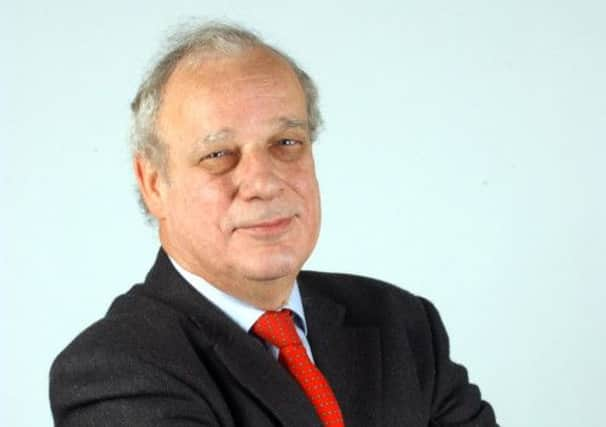Comment: On the brink of a rural renaissance


After decades of attrition and decline, might a renaissance be close at hand?
First, the more immediate upturn that’s unfolding. I had the pleasure and the peril of attending a most worthwhile Scottish Council for Development and Industry Influencers’ Dinner in Perth last Thursday – one of a series of such events to mark the Year of Natural Scotland.
Advertisement
Hide AdAdvertisement
Hide AdThe pleasure was in meeting up again with Fiona Logan, chief executive of Loch Lomond and the Trossachs National Park. Here is one of the most outstanding and successful women in Scottish life today. She has handled many feuding pressures and challenges at the park with competence, professionalism and infectious energy: here is truly a national treasure.
The peril was in being the guest speaker for an audience of senior public and private sector movers and shakers on prospects for Scotland’s rural economy.
My first duty was a confession. Earlier this year, when we were still recovering from the longest period of cold weather in living memory, I wrote here despairing of the prospects for rural Scotland and the outlook for tourism. That long cold spell had followed the wettest summer for a century. Who would dare to return to rural Scotland after a wash-out holiday in Glen Drookit?
Barely had the ink dried on this baleful assessment than we went on to experience one of the warmest summers in years. Across Scotland, from Balloch to Inverness, Stornoway to Anstruther, tourist businesses enjoyed an upturn in visits and forward bookings. Some destinations reported business up by 40 per cent on last year.
Just as important has been the improvement in outlook for our food and drink industries. New Bank of Scotland research forecasts that more than 5,600 extra jobs could be created in Scotland’s food and drink sector by 2018 and it could “significantly exceed” an industry target of achieving annual turnover of £12.5 billion by 2017.
Many businesses, of course, are still struggling. But combine this with growing evidence of economic upturn overall – from labour market data to retail sales, business start-ups to mortgage lending, upbeat manufacturing and construction surveys through to the encouraging service sector figures last week – and the summer of 2013 has turned out markedly better than I had expected.
And this upturn matters here because, according to Scottish Natural Heritage, one in seven jobs in Scotland relies on the natural environment, a most undervalued economic asset. And the two national parks draw in aggregate one million domestic visitors. Taking into account the towns and businesses within the parks, they are reckoned by VisitScotland to contribute £600 million to the Scottish economy.
The latest figures on the strength of commercial planning applications in the parks may come as a surprise. In the Cairngorms National Park the number of business applications has risen more than 36 per cent over last year and is comfortably twice their 2011 level. They range from outdoor sports shops to pedestrian bridge proposals across the Dee. The Loch Lomond National Park last year saw a 20 per cent increase in business applications over 2011. These include the Cononish gold mine by Tyndrum and the Ben Arthur resort by Arrochar, with jobs for 300. This for a £70m five-star hotel complex to be run by the Wyndham Group, and also for housing on a derelict torpedo site. Other applications in progress include the former Highland Way Hotel site at Balmaha for a restaurant and hotel, and further development at Mhor 84 near Strathyre by the entrepreneur Tom Lewis.
Advertisement
Hide AdAdvertisement
Hide AdThousands of small businesses make a contribution, from the Sula soft furnishings firm built up by Catriona MacGeoch, now next door to Mhor 84, to the bijou Riverside Garden Nursery at Tullybannocher near Comrie, expertly run by Jonathan MacDonald.
But it is the longer term that may spring the biggest surprise for rural Scotland. Conventional measures of GDP are failing to capture the changing nature and composition of our business base. The dynamic of the economy emerging from recession is different to that which entered it. Between 2008 and 2011, e-commerce business has grown by 44 per cent. The weekly average spent online is now more than £570m. Almost 11 per cent of all UK retail sales are made over the internet. Online supported trade in the hotel and food services sectors, while starting from a low base relative to other sectors, has more than doubled since 2008, with online supported turnover now reckoned at £6bn.
The relevance for rural Scotland is that broadband and wi-fi dissolve the barriers of location and geography. They enable people to work from locations of their choice, in beautiful surroundings and with the minimum of environmental damage and intrusion.
That is why, over the coming years, we could see as radical an economic and social change in rural Scotland as we have experienced since the 1950s – not decline but renaissance. Instead of cities as the place to work and rural Scotland as the place for leisure, rural Scotland may increasingly emerge as the preferred location for work, and cities as the destination points for leisure.
We should count our blessings more than we do. We are blessed in Scotland with stunning landscapes that formed our nation, that shaped our past and moulded our present. We love these landscapes for the reassurance that they give, the sense of where we came from and who we are. They give us a powerful sense of roots, belonging and our national story. And they are our unique and compelling signature on the world. Our national parks can give support to the innovation, enterprise and mission of rural entrepreneurs. And by so doing they can flourish, both as theatres of nature and as theatres of new enterprise. The future can be where our hearts most lie.
Twitter: @Bill_Jamieson